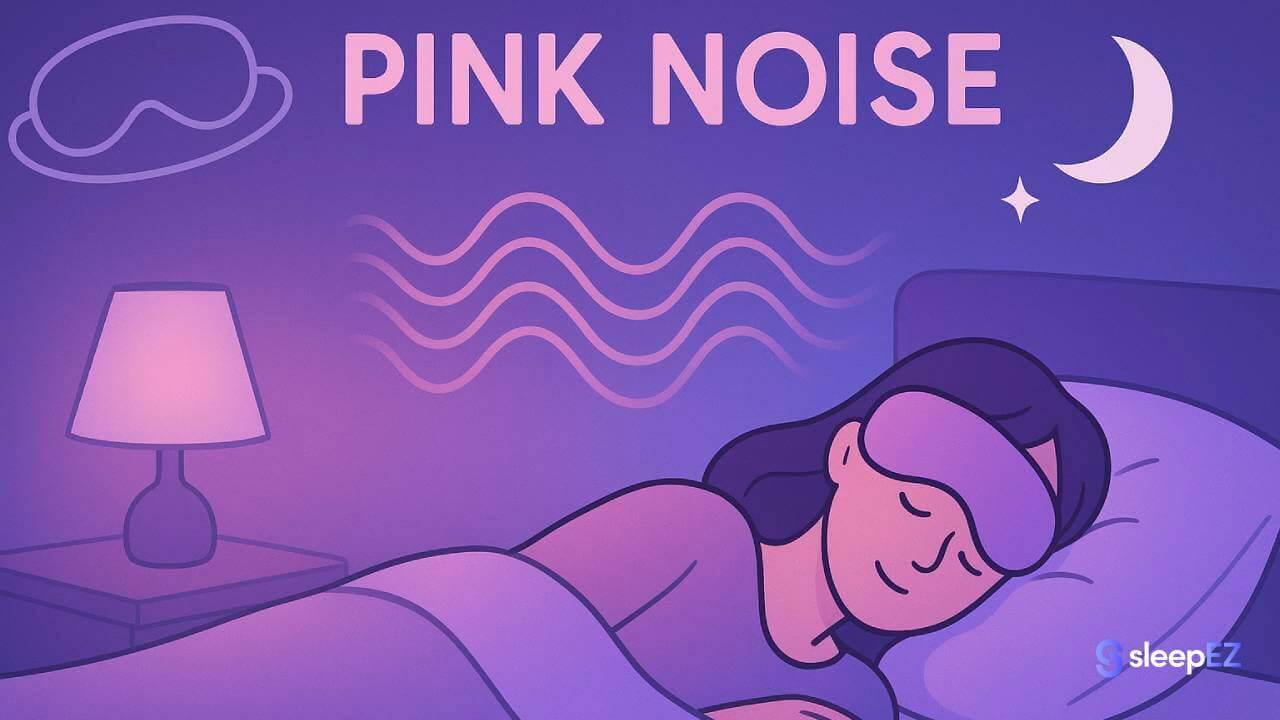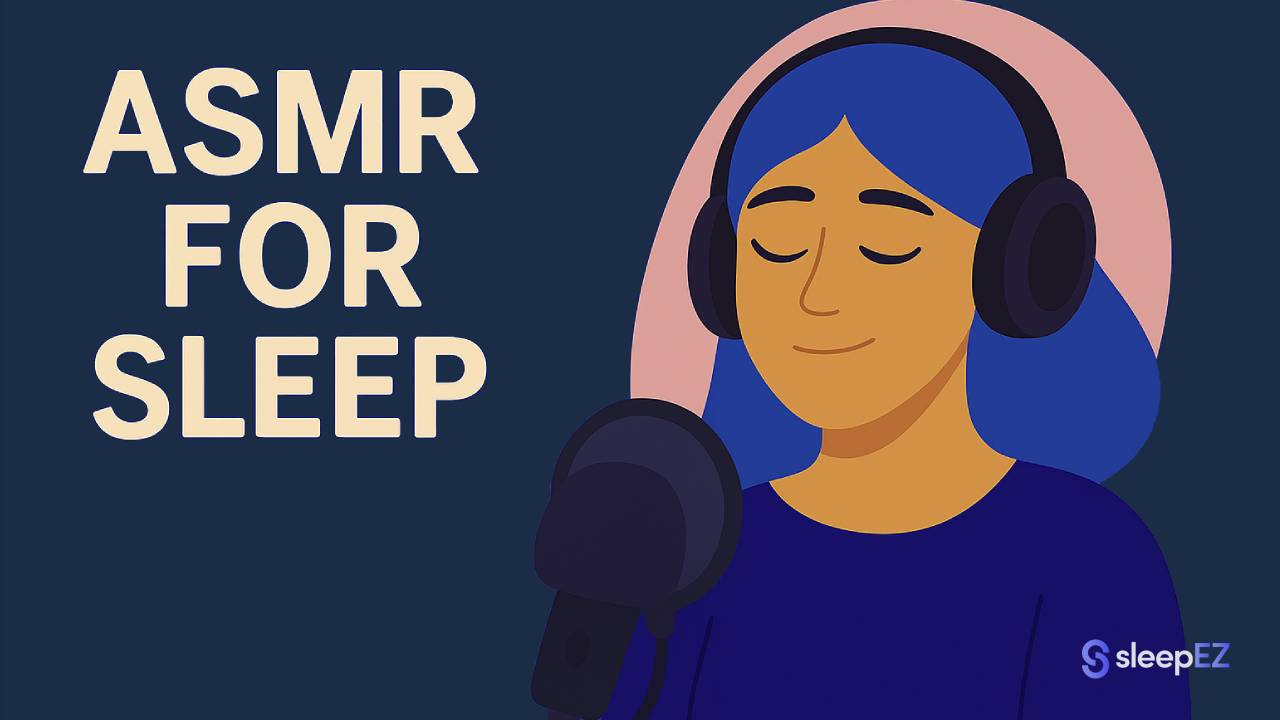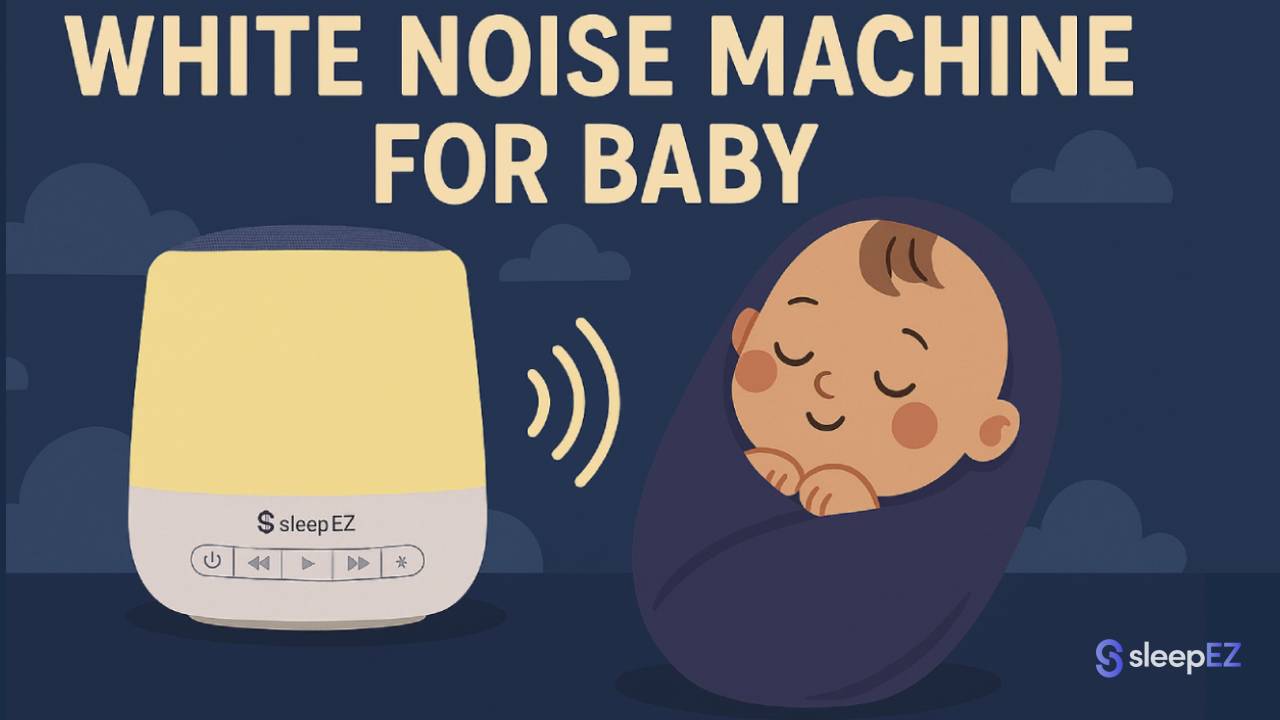Picture the sound of steady rain on your roof or wind through forest leaves. These natural sounds are examples of pink noise, a specific type of audio frequency that researchers are studying for sleep benefits.
Unlike white noise, which has equal power across all frequencies, pink noise contains more low-frequency sounds, creating deeper, more soothing tones. Studies suggest this frequency pattern might enhance sleep quality by synchronizing with your brain's natural rhythms during rest.
But does pink noise actually deliver on these potential benefits? And more importantly, could it help you sleep better tonight?
What Is Pink Noise?
Pink noise is a type of sound that balances all frequencies in a way that sounds natural and calming. Think of steady rainfall or wind through trees. These are perfect examples of pink noise in nature.
The Technical Details
Pink noise has equal power across each octave, typically ranging from about 20 Hz to 20,000 Hz (the full range of human hearing). This frequency distribution creates more low-frequency sounds than high ones, making it deeper and more soothing than white noise.
Specifically, pink noise's power decreases by 3 decibels per octave as frequency increases, which mirrors many natural sounds and matches how our ears process audio information.
Your brain processes pink noise as pleasant background sound. It doesn't jar you awake like sudden noises do. Instead, it creates a consistent audio blanket that promotes rest.
Read: Best Bluetooth Sleep Mask in Australia
Benefits of Pink Noise for Sleep
Scientific studies reveal several ways pink noise improves sleep quality. A systematic review found that 81.9% of pink noise studies showed sleep improvements, with benefits including better slow wave activity, less time awake after falling asleep, and faster sleep onset.
Improving Sleep Quality
Pink noise masks disruptive sounds that wake you up. Car doors slamming, neighbors talking, or your partner moving around become barely noticeable. Studies show that people who sleep with pink noise experience more stable deep sleep phases.
A Northwestern University study published in Frontiers in Human Neuroscience (2017) found that acoustic stimulation synchronized to brain waves enhanced deep sleep in older adults. Participants aged 60 and older showed memory improvement three times larger after pink-noise stimulation, with measurable increases in slow-wave sleep activity.
Enhancing Memory and Focus
Steady pink noise may help your brain filter out distractions during work or study. It creates a consistent environment for concentration, and students often report easier reading and information retention with pink noise in the background.
The frequency pattern appears to synchronize with brain waves during deep sleep, potentially enhancing memory consolidation. Research suggests steady pink noise can influence brain activity patterns and improve sleep stability.
Masking Tinnitus
People with ringing in their ears find relief with pink noise. The consistent sound helps cover up the internal noise that makes silence uncomfortable. Many audiologists recommend it as part of tinnitus management.
Soothing Infants
Babies respond well to pink noise because it reminds them of sounds in the womb. It masks household noises that might startle them awake. Many parents find their babies fall asleep faster and stay asleep longer with pink noise.
Promoting Relaxation
Pink noise naturally reduces stress. The steady, predictable sound tells your nervous system that everything is safe. This makes it easier to unwind after a busy day.
Pink Noise for Babies and Children
Babies and young children often struggle with sleep because their developing nervous systems are easily overstimulated. Pink noise addresses this by providing the consistent, womb-like sounds that naturally soothe infants while masking household disruptions that wake them.
Why It Works for Babies
Pink noise mimics the constant sounds babies heard in the womb. It masks sudden noises like doorbells, barking dogs, or older siblings playing. This helps babies develop better sleep patterns and stay asleep longer.
The Perfect Nursery Companion
The Hush Sound Machine for Babies offers more than just sound. It includes a gentle night light and child-safe design made specifically for nurseries. The multi-function approach makes bedtime routines easier for parents.
Safety First: How to Use Pink Noise Safely for Your Baby
- Keep volume at or below 50 decibels (about as loud as a quiet conversation)
- Place the sound machine at least 7 feet from your baby's crib
- Use a timer if your baby doesn't need sound all night
- Choose devices designed for nurseries with appropriate safety features
Pink Noise vs. White Noise vs. Brown Noise
Each color of noise affects your brain differently. Understanding these differences helps you pick the right sound for your specific sleep or focus needs.
|
Feature |
Pink Noise |
White Noise |
Brown Noise |
|
Sound Analogy |
Steady rainfall |
TV static |
Deep ocean rumble |
|
Frequency Profile |
Balanced across octaves |
Equal power at all frequencies |
Heavy on low frequencies |
|
Best For |
Sleep and focus |
Masking loud sounds |
Deep relaxation |
Choose pink noise if you want better sleep and gentle background sound for focus.
Choose white noise if you need to block out loud, sudden noises like traffic or construction.
Choose brown noise if you prefer deeper, more rumbling sounds for meditation or stress relief.
Most people find pink noise the most pleasant for daily use.
How to Try Pink Noise at Home
Ready to try pink noise but not sure where to start? These three methods range from free options to premium solutions, so you can find what works best for your lifestyle and budget.
Dedicated Sound Machine
A dedicated sound machine offers the most reliable experience with consistent, high-quality audio designed for sleep. For adults, the Hush+ Sound Machine provides 34+ soothing sounds including rich pink noise, without phone notifications or screen glare.
For babies and children, the Hush Sound Machine offers gentle sounds specifically designed for nurseries. Look for devices with volume control, timer settings, and loop-free playback to avoid jarring transitions.
Partner Solutions
The Partner Solution: Sleeping with someone who prefers silence? They can use QuietBuds Silicone Earplugs to create their own quiet space while you enjoy your sound machine. It's the perfect compromise for couples with different sleep needs.
Read: Best Ear Plugs for Sleeping
Private Listening for Travel
The Dreamy Sounds Bluetooth Sleep Mask combines complete darkness with built-in speakers. Stream pink noise from your phone while blocking out all light. It's perfect for travel, afternoon naps, or when you need personal sound space.
Free Digital Sources
YouTube videos and phone apps let you try pink noise before investing in equipment. Search for "pink noise 8 hours" or download sleep apps with pink noise options. This works as a starting point, though dedicated devices provide better sound quality and fewer interruptions. You can use Dreamy Sounds Bluetooth Sleep Mask for this.
Important Limitations and Considerations
While pink noise may help many people sleep better, it doesn't work for everyone. Here are key limitations to consider:
When Pink Noise Might Not Help
Some research suggests that pink noise may not be ideal for everyone, with one study noting potential effects on certain cognitive tasks during sleep.
- Individual sensitivity: Some people find any background noise disruptive
- Existing sleep disorders: Pink noise won't cure sleep apnea, restless leg syndrome, or other medical conditions
- Habituation: Your brain may adapt over time, reducing effectiveness
- Volume sensitivity: Too loud can stimulate; too quiet may not mask sounds effectively
Who Should Use Caution
People with hyperacusis (sound sensitivity) may find even gentle pink noise overwhelming. Those taking medications affecting hearing or sleep should consult healthcare providers.
Anyone with undiagnosed sleep issues should address underlying causes rather than relying solely on sound masking.
Realistic Expectations
Pink noise typically helps with sleep onset and maintenance, but individual results vary significantly. Most people who benefit notice improvements within 3-7 days, though some need several weeks to adapt.
Final Thoughts
So, can pink noise help you sleep? Based on current research, the answer appears to be yes for many people, though results vary significantly. Studies suggest potential benefits for deep sleep, memory consolidation, and overall sleep quality, with pink noise offering a deeper, more natural-sounding alternative to traditional white noise.
You can try pink noise tonight using free apps or streaming services. If you like the results, consider investing in a dedicated sound machine for consistent, high-quality audio. The approach is safe, easy to test, and costs little to start.
Give pink noise a few nights to see how it affects your sleep. Many people notice improvements within the first week of regular use.




Leave a comment
This site is protected by hCaptcha and the hCaptcha Privacy Policy and Terms of Service apply.